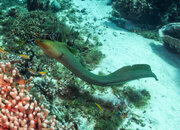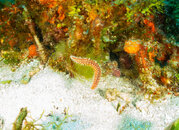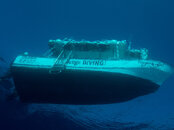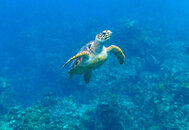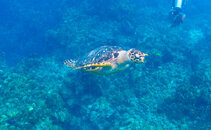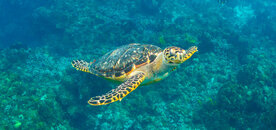Guitarcrazy
Contributor
I have been getting more into photography the past few years and am looking to upgrade my camera. I currently have the TG-6 with two strobes, video light, Backscatter wide angle and air lens. I want to get something with greater dynamic range and more resolution. I like to print photos occasionally and the TG sensor seems to be lacking in that area. I have looked extensively at the E-PL10 and AOI Housing that Backscatter recommends, but I am not sure that going from a 12MP to the 16MP 4 thirds is enough of a step up. I have found some deals on the OM-D EM-5 Mark III and OM-D EM10 Mark IV. They are similar in performance and only $100 difference between the two.
Question 1: Will I be able to recognize the difference between the 16MP in the E-PL10 and the 20MP OM-D Em5 Mark III or EM10 MIV? I can get the camera and housing for the EM-5 or OM-10 for about $300 or $400 more than the E-PL10 combo from Backscatter.
Question 2: Would you use camera lenses and ports, or use accessory wet lenses? I am not sure I would get a macro lens for the camera as I would be able to use the TG-6 for macro, which I haven't done a lot of.
Question 3: I do like the fact that the TG is waterproof on its own, making a flood of the housing a non-event. How concerned should I be about flooding the housing with one of the other cameras? The OM-D EM-5 Mark III is advertised as weatherproof, whereas the OM-D EM-10 Mark IV is not. Would that provide enough protection to get to the surface without damaging the camera in the event you had a flooding alarm? TIA
Question 1: Will I be able to recognize the difference between the 16MP in the E-PL10 and the 20MP OM-D Em5 Mark III or EM10 MIV? I can get the camera and housing for the EM-5 or OM-10 for about $300 or $400 more than the E-PL10 combo from Backscatter.
Question 2: Would you use camera lenses and ports, or use accessory wet lenses? I am not sure I would get a macro lens for the camera as I would be able to use the TG-6 for macro, which I haven't done a lot of.
Question 3: I do like the fact that the TG is waterproof on its own, making a flood of the housing a non-event. How concerned should I be about flooding the housing with one of the other cameras? The OM-D EM-5 Mark III is advertised as weatherproof, whereas the OM-D EM-10 Mark IV is not. Would that provide enough protection to get to the surface without damaging the camera in the event you had a flooding alarm? TIA




